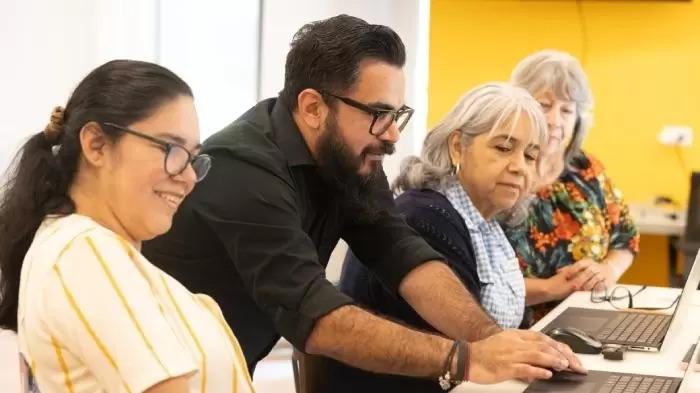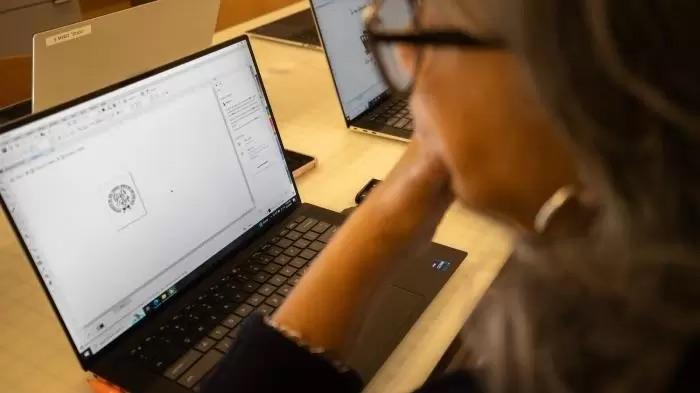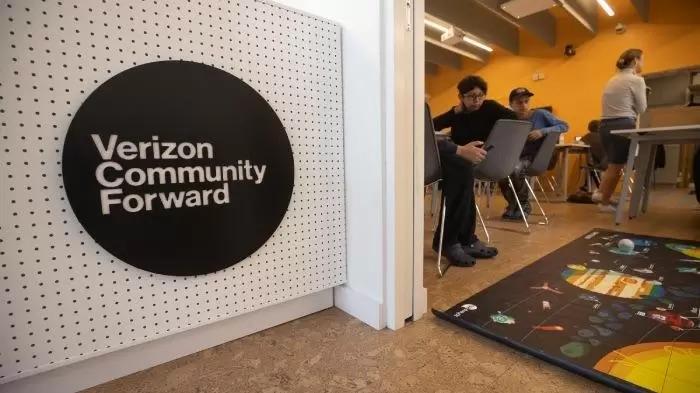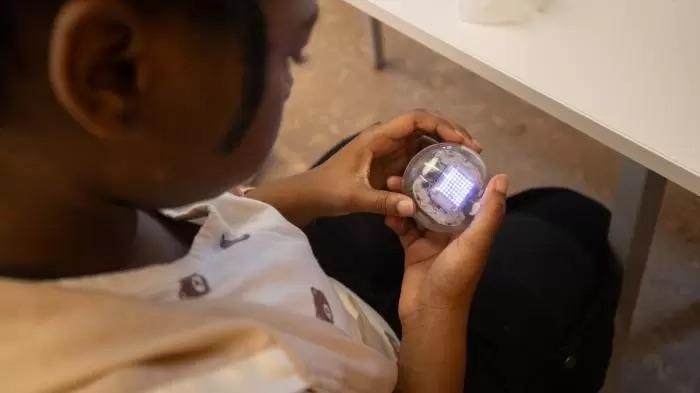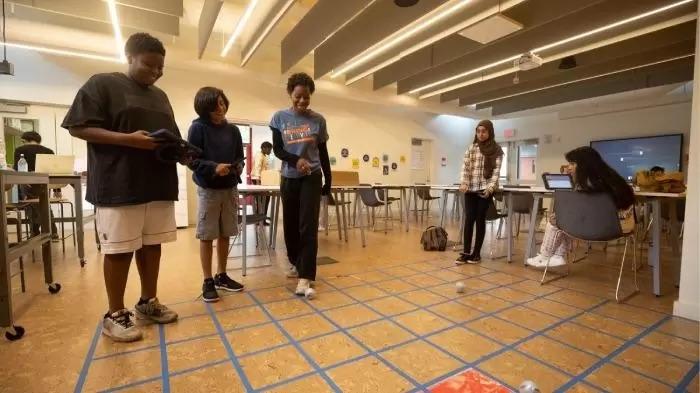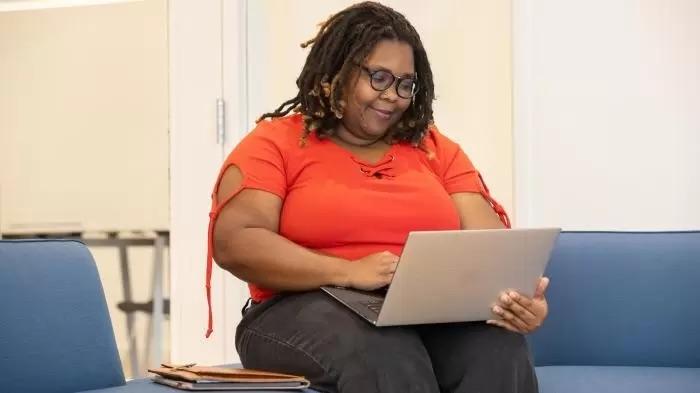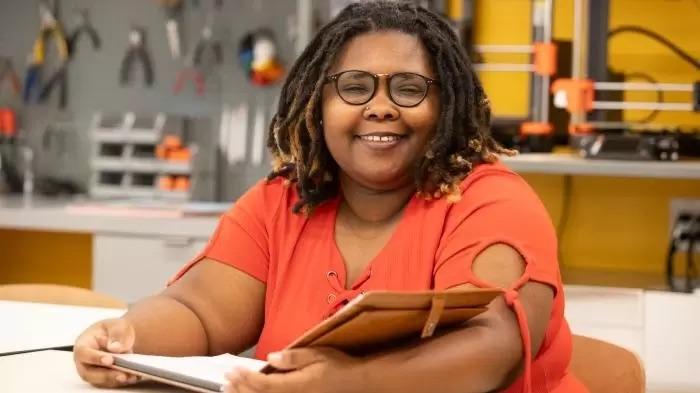Code, Connection, and Careers: How a Community Learning and Innovation Center Is Empowering Houston
By: Suzanne Guillette
With access to teaching and technology, Verizon Community Forward helps boost digital skills for students, adults, and seniors in cities across the country
For Geraldine Sanchez, a retiree from Houston, learning cutting-edge technology every week is par for the course. “It’s so important to keep learning,” says Sanchez, 69. “Just because you’re a certain age doesn’t mean you have to stop learning.”
Each week, Sanchez joins the Settegast Silveragers, a group of vibrant senior women, at the Verizon Community Forward East End Learning Center in Houston’s East End community, where they learn about robotics, how to use Glowforge laser cutters and 3-D printers, and are instructed in iMovie video editing software.
These adult learning classes are part of Verizon Community Forward, a program that partners with local non-profit organizations across the country to transform a room within community spaces into innovative learning centers, complete with upgraded technology. The program aims to expand and enrich educational and skills training for youth and adults by providing STEM education and workforce development in areas where resources have traditionally been limited.
Verizon Community Forward partner BakerRipley, a nonprofit that is over 115 years old, has deep roots in the Houston area. The nonprofit’s mission is to provide its Houston neighbors with opportunities to learn, connect, and access resources. “[We want] to make sure we are giving our neighbors access,” says Carie-Anne Simmons, who manages BakerRipley’s learning and innovation centers. “We’re working to increase their familiarity with and access to technology.”
Simmons notes that the Silveragers group is eager to participate and return to class every week. “It’s always nice to think about the fact that they want to spend their social time in our center,” she says. “They have choices, and they keep coming back.”
The social connection the senior participants find in the program is vital. Since the group began frequenting the center last summer, they’ve worked together to dream up new ways to use technology, such as using the laser cutter to create engraved coasters, resin earrings, and cake toppers. They’ve also brought family members to the center, working alongside their grandchildren in a multi-generational learning and bonding experience.
Group member Rossana Bobbitt, 66, says she is enthusiastic about the feeling of possibility the class has brought her. “I get so excited,” she says. “Every week, I come home and tell my husband, ‘Look at what we learned! Look at what we did!’ This is the best thing that’s happened to me since I retired.”
Introducing youth to STEM through coding
A dozen miles across Houston, middle schoolers gathered at the Verizon Community Forward Gulfton Sharpstown Learning Center to participate in Camp Code. The summer program introduces students to STEM, and specifically code and code blocks (a group of instructions in code, kept together so the computer runs them as a single task).
Throughout the summer, more than 150 middle schoolers participated in the camp at the center. This program is one of a series of programs offered for youth at the center.
This past July, Camp Code was in full swing, with a cohort of three girls and six boys eager to learn. In one activity, the students partnered up to explore how Sphero BOLTs, a type of coding robot, can communicate with each other. They each programmed their Sphero BOLT to communicate with their partner's robot using an app on a tablet; one student’s robot was the leader, while the other was the follower, mimicking the leader’s movements across the ground. Using the controls on the app, students could program the robot’s speed, color, and sound.
For Fatima, a sixth grader who had previously participated in STEM-focused after-school programming, the Camp Code experience continued to develop her skills, even during summer vacation. Fatima had learned, in the after-school program, how to build robots. “Here, I’m learning how to code them,” she explains. Although only in middle school, Fatima says she is eyeing an engineering career. “I like math, and I like fixing technical things,” she says.
For many of the students, Camp Code sparks an interest in education and a future in STEM. Damian, an eighth grader who had previously participated in a similar camp, says he is interested in a career in a STEM field. Nathalie, also an eighth grader, has an interest in physics and says participating in Camp Code helped build her confidence.
“I love STEM because it’s very broad,” says Camp Code instructor Megan Taylor. “There are so many avenues you can go down to become successful. [I show the students] it can open doors to a lot of other things. Having that exposure and learning about it [can make a huge difference].”
Supporting new career pathways and professional ambitions
Houston resident Oni Meeks was reconsidering her career path during the COVID-19 pandemic when she came upon a social media post that would change the trajectory of her life. It was a call for community members to participate in a remote-learning IT course, and gain IT certification as well. Meeks, who had paused her college studies because of the demands of her job, decided to take the course. She was familiar with tech to some degree, after serving as the go-to troubleshooter at the hotel where she worked.
The course Meeks took was offered through the Tech Equity program at the Verizon Community Forward East End Learning Center. Comparing her experience in the class with her previous jobs working in a grocery store and the hotel, she had an illuminating realization: “I definitely wanted to go into IT,” she says.
From there, Meeks fully dedicated herself to her new career path, pouring her energy and focus into learning. She went on to receive her certification from the Computing Technology Industry Association. “The certification made it possible for me to get a job in IT three months later,” she says. She worked the help desk at a third-party IT company — an experience she says sharpened her communication skills — before being promoted to senior support services analyst. Just a year later, Meeks found a new job working as an application support specialist at an insurance company, where she is thriving.
Now that she’s on a new path, Meeks continues to pay it forward by speaking to new students in the IT program and making herself accessible if the students there have questions.
About the author:
Suzanne Guillette has previously written about technology for Verizon and her work has appeared in O Magazine, Quartz and the Rumpus. She lives in New York City.


